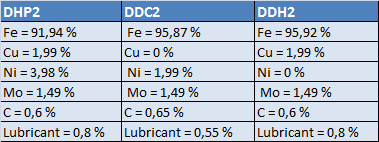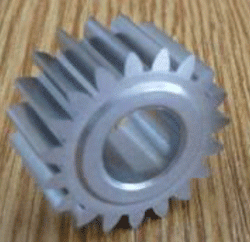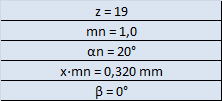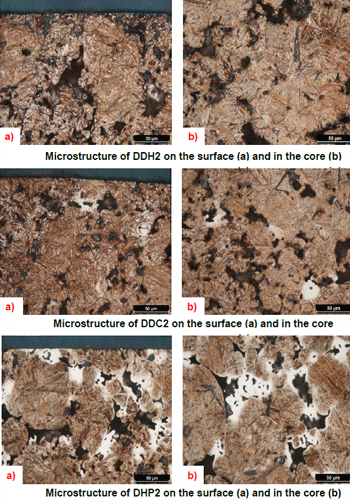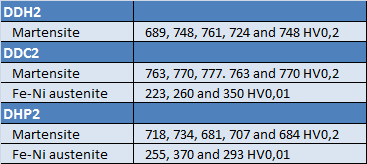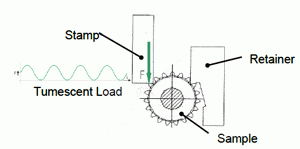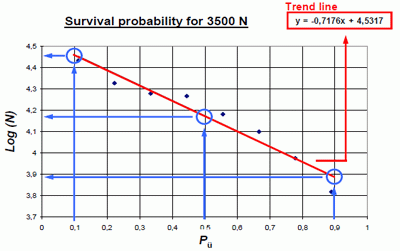The influence of nickel additions on powder metallurgy gear tooth root strength
However, not all potential PM gear applications require these densification processes and it is important to be able to analyse the requirements of various applications in order to optimise the choice of material and processing sequence and therefore deliver the required performance at minimum cost.
As a contributor to a programme with this overall objective, the influence of nickel additions to a sintered hardened Fe-1.5%Mo-0.6%C base material on tooth bend fatigue strength has been studied in a paper reported by A DeNicolo (GKN Sinter Metals, Brunico, Italy) and D Rubesa (University of Applied Science Joanneum, Graz, Austria) at the Euro PM 2011 Conference, held in Barcelona, 9-12 October, 2011. Dr David Whittaker reports exclusively for ipmd.net
Development of Specific Design Criteria for the Optimization of Sintered Gears: The Influence of Nickel on Tooth Root Strength
In this study, three different powder mixtures were processed (Table 1). These compositions were based on Fe-1.5%Mo-0.6%C, to which were added 2% Cu (DDH2), 2%Ni (DDC2) or 2%Cu + 4%Ni (DHP2). As a result of these additions, the amounts of Fe-Ni austenite in the final microstructure varied.
Gear components, as shown in Fig. 1 and defined in terms of design parameters in Table 2, were cold compacted from each of these powder mixtures and the compacts were sinter hardened in a belt furnace at 1120°C in endogas and tempered in air at 180oC. In all cases, the sintered density level was 7.0 g/cm3. The carbon potential of the sintering atmosphere was set at 0.65%C.
The sintered hardened microstructures created with these three powder mixtures are shown in Figs. 2 In all materials, the predominant microstructural phase was martensite, but the amount of Fe-Ni austenite increased as the nickel level in the powder increased.
Microhardness determinations were made in the martensite and austenite phases in each material (Table 3). The slightly higher hardness levels in material DDC2 was related to the higher carbon content (0.65% vs 0.6%) in this material.
Tooth root bend fatigue tests on the sinter hardened parts were carried out on a custom-made pulsator test bench (Fig. 3).
Test results at each load level were presented as number of cycles vs. probability of survival, calculated using the Weibull and Gassner method. An example of such a plot is shown in Fig. 4.
From this type of plot, the loads for probabilities of survival of 10% and 90% were calculated and finally these loads were converted into stresses using a calculation model based on DIN 3990 Part 3.
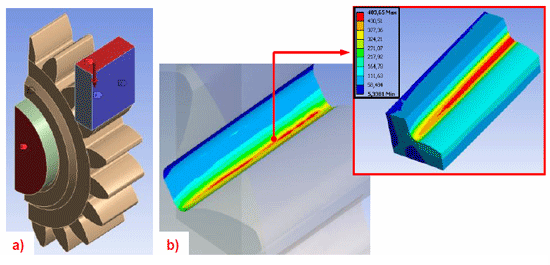
Fig. 5 Calculation model of the analysed gear (a) and von Mises stress in the tooth root and the corresponding sub-model (b)*
To verify the results, a finite element analysis was carried out. In this analysis, the gear was loaded in the same manner as in the tests on the pulsator rig (Fig. 5a). At a given load, the maximum von Mises stress in the tooth root was calculated (Fig. 5b). The small differences between the two types of calculation can be seen in Table 4, confirming the validity of the chosen calculation method for the evaluation of the test results.

Table 4 Comparison of calculated tooth root endurance limits for each material with the FEA results*
A general trend in these results could be recognised. As nickel content increased, the proportion of Fe-Ni austenite in the microstructure increased and this increase in the proportion of the softer phase could be linked to a reduction in fatigue strength.
* Images from the paper by A DeNicolo et al, ‘Development of Specific Design Criteria for the Optimization of Sintered Gears: The Influence of Nickel on Tooth Root Strength’ presented at Euro PM2011 Conference. Published in the Conference Proceedings by EPMA, UK)
News | Articles | Market reviews | Search directory | Subscribe to e-newsletter



